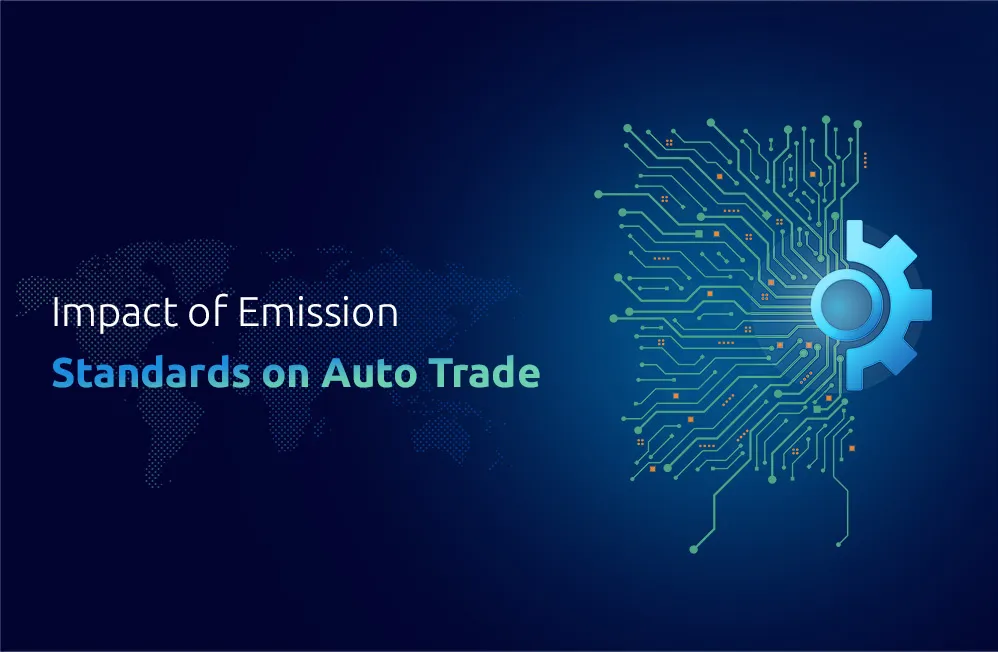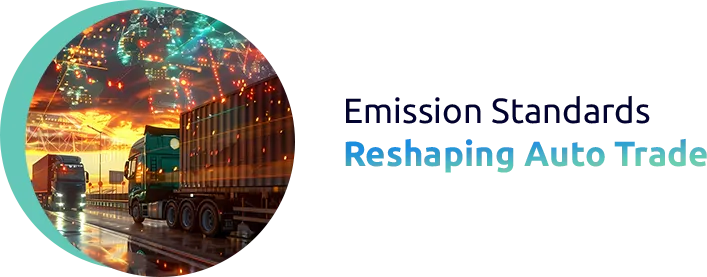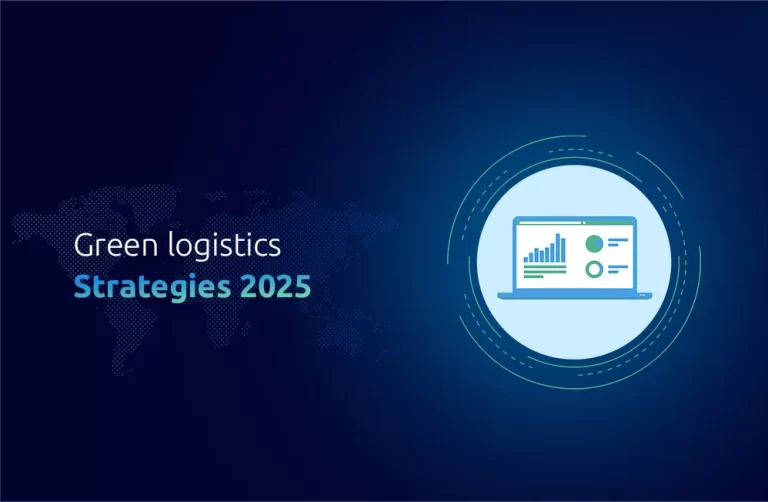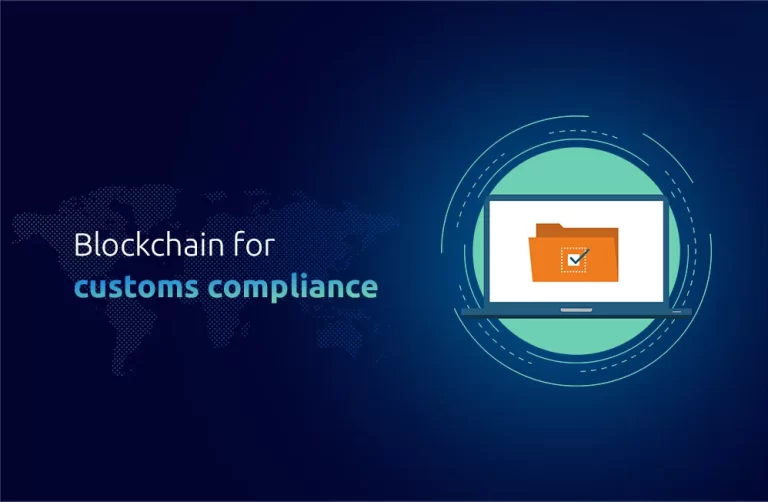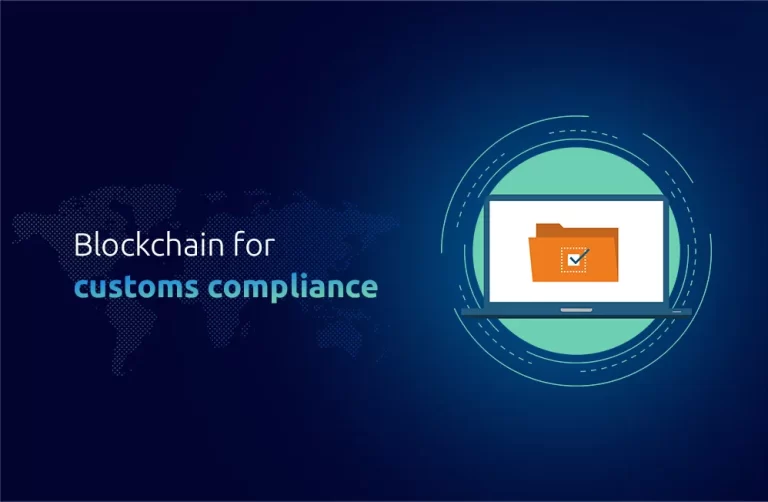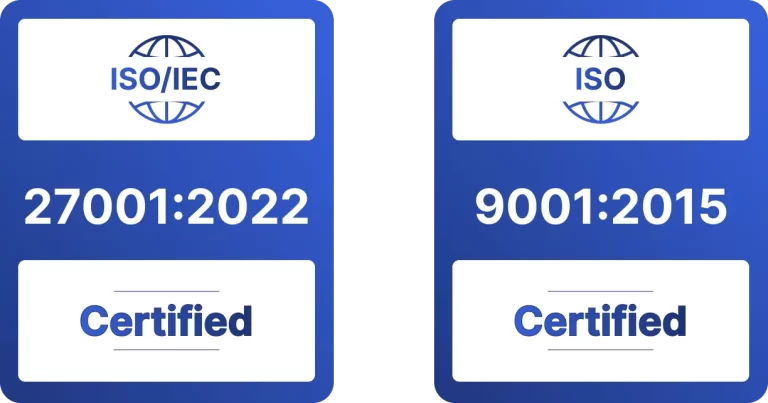Insight
The automotive industry is witnessing an incredible transformation as more rigid environmental laws take hold & new vehicle emission standards are adopted around the globe. These prototypes aim to reduce harmful emissions, enhance air quality, & promote sustainability within this industry. As governments around the globe support greener transportation options, their influence through trade transactions has been substantial.
Introducing new vehicle emission standards is changing the way vehicles are manufactured and influencing the dynamics of the international automotive trade. Manufacturers are noticing this as countries introduce more stringent laws, and manufacturers must adhere to their processes. This article will examine how these emission standards impact cross-border trade-in vehicles, what hurdles manufacturers have to deal with in a changing focus on greener technology, and the opportunities that can be gained from this transition.
Global Vehicle Emission Standards: A Look at the Changing Landscape
Vehicle emission standards are constantly tightening to reduce pollution & slow climate change, with governments from Berlin to Beijing and beyond raising the threshold for pollutants. The European Union, the United States, & China: global front-runners in emission regulations, each with the maximum permissible emissions for carbon dioxide (CO2), nitrogen oxides (NOx), & particulate matter (PM).
These new standards are prompting car manufacturers to invest in eco-friendly technologies such as electric vehicles, hybrid systems & advanced fuel-efficient engines. This push towards greener alternatives has not only altered vehicle design and production but has enormously impacted the automotive trade across borders.
Impact on Cross-Border Automotive Trade
Stricter vehicle emission standards directly impact cross-border automotive trade, from altering global supply chains and manufacturing cost increases to complying with different regulations across countries.
Increased Compliance Costs
The increased compliance costs for manufacturers could be one of the most significant impacts of new emission standards on cross-border trade. To satisfy increasingly challenging emissions regulations in all markets, automakers must invest in high technology, run many tests, and achieve the compliance required with the standards, which raises the cost of production and ultimately to the final customer.
International markets come under enormous pricing pressure if industrial production costs rise sharply, which creates regional inequalities as different emissions standards realign trade flows around the world. When that happens, global expenses are slashed, and costs are rendered uncompetitive with competitors that surpass existing emission standards. Indeed, firms working under lighter emissions pressures could even start finding it hard to be competitive internationally if they’re opening markets with diverging emissions grades that alter pricing gaps up and down the locality or reengineer trade pathways throughout the globe.
Shift Toward Electric Vehicles (EVs)
With tougher emission standards worldwide, the auto industry has been trending heavily towards electric vehicles (EVs). And because EVs have zero tailpipe emissions, they can be part of the solution to compliance with regulatory standards. Several countries introduced subsidies and incentives for EV buyers, increasing demand for electric vehicles.
This has impacted cross-border trade as countries with more stringent emission standards, like the European Union and California, import more electric vehicles to meet consumer demand and regulatory standards. Meanwhile, less progressive countries could drag in the global race to electrification, requiring producers to adapt to produce multiple iterations for each marketplace.
Regulatory Complexity in Cross-Border Trade
The new vehicle emission standards create regulatory complexity challenges for companies engaged in cross-border automotive trade. Some countries/regions have emissions standards that differ from others and may even have specific testing requirements. This c66an mean manufacturers find it challenging to create a vehicle that adheres to all standards simultaneously. This impedes trade since it means that cars produced for one market may not satisfy the requirements of another market.
Environmental Incentives for Green Technology
Consequently, though it also raises the prices for stricter emission standards, it also gives automakers a huge opportunity to benefit from the increased demand for greener vehicles globally. As countries offer manufacturers environmental incentives for investments in clean technologies such as electric & hybrid vehicles, automotive manufacturers across the globe are rising to the challenge & expanding their EVs worldwide. The EU, for instance, offers subsidies & tax incentives to automakers that manufacture low-emission vehicles.
These allocations help to offset some of the higher costs of production associated with meeting strict emissions standards and encourage companies to invest in green technology. This offers automakers an opportunity to shift gears quickly in response to regulatory changes, particularly in markets that offer financial benefits for green vehicles.
Market Insights: How Regulations Are Shaping Global Automotive Trade
The worldwide effort to increase vehicular emission restrictions fundamentally changes automotive trading procedures. A 2020 WTO report shows that major markets such as the EU & the U.S. have established tightened environmental regulations, triggering increased demand for electric vehicles and their components to be exported. In 2020, the EU stood as the primary destination for global EV exports, with a share of 45% of the total exports, thus indicating a significant move towards sustainable vehicle production.
The production transformation of automakers interacted with significant global trade changes through the adoption of stricter emission standards, which drove up EV imports alongside components from nations that enforce high emission standards. The market for standard combustion engine vehicles has diminished in nations with lenient vehicle specifications.
Did You Know?
Statistics from the International Energy Agency demonstrate that the electric vehicle stock passed the 10 million unit milestone in 2020 after increasing 43% since 2019.
Conclusion
The introduction of stricter vehicle emission standards is undeniably affecting cross-border automotive trade. These standards are driving up compliance costs for manufacturers, encouraging a shift toward electric vehicles, and creating regulatory complexities in international trade.
The worldwide drive toward environment-friendly vehicles produces new market possibilities, mainly for those manufacturers who successfully adapt their product lines to regulatory changes. One Union Solutions commits itself to assisting businesses in meeting modern regulatory changes while making their automotive components accessible throughout global markets.
FAQs
Which primary obstacles does the automotive sector encounter because of new emission standards?
Businesses in the automotive industry face three major obstacles: costlier manufacturing expenses, complex regulatory compatibility requirements between markets, & extensive investments in clean solutions implementation.
What impact do electric vehicles (EVs) have on the movement of automobiles across international borders?
The rising popularity of electric vehicles, because of strict emission standards, produces increased imports and exports of electric vehicles and their essential parts.
What effects do automobile emission standards have on the international market vehicle costs?
When manufacturers must adhere to intensified emission requirements, their production expenses grow, thus resulting in elevated vehicle prices observed in international export markets.
What makes it hard for automobile manufacturers to simultaneously adhere to several emission requirements?
Automakers find it difficult to match emission requirements from different countries because each nation utilizes its specific standards. The fulfilment process involves adjustments, extra testing procedures, and documentation work.
What steps must manufacturers take to deal with regulatory hurdles in the automotive industry?
Manufacturers achieve regulatory compliance by partnering with experts in regulations alongside technology investments that meet worldwide requirements and test their products against every emission standard of their target markets.

